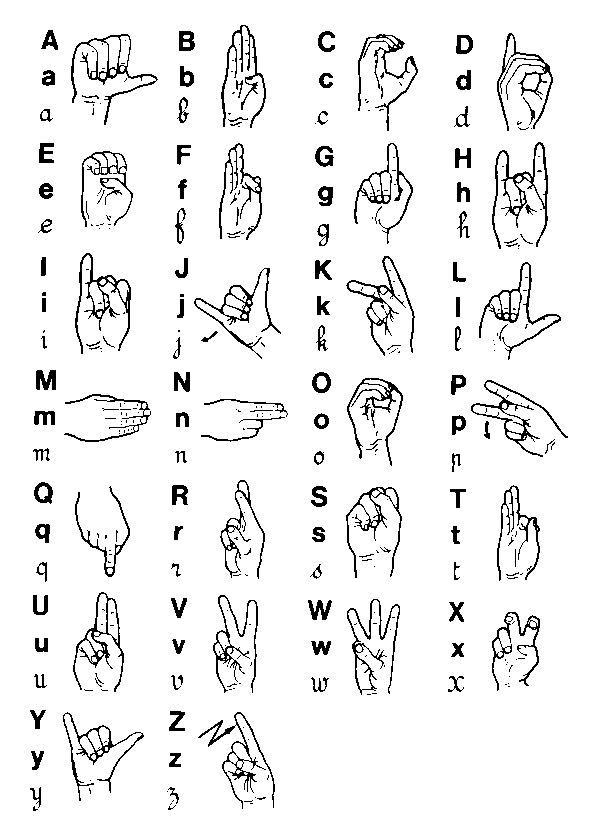As a translation agency, we’re surrounded by the world of languages. We manage numerous translation projects in more than 50 languages. Of course, our clients ask us to translate from French to English, or from English to Italian more often than not, but we also manage Scandinavian, Asian or Arabic language projects. We were even asked to translate into Tagalog (a Filipino dialect). Our interpreters are often required for English, German, Spanish or Italian projects. Simply put, languages are our thing.
At the same time, there is one language we know little about, here at TradOnline. It’s used by 100,000 people in France. It’s not Alsatian, nor Basque, nor Breton. Cat got your tongue? I’m referring to the French Sign Language or FSL for short. This language is used by deaf and speech-impaired people. It is spoken, or rather “signed”, by 100,000 to 200,000 people in France.
The origins of the French Sign Language
FSL was naturally established in the homes of families where one or more of their members were deaf.
Here’s a short history. In 1760, the Abbé Charles Michel de l’Epée became the teacher of deaf twin sisters, who communicated between themselves and with others by using signs. It was by their side that the Abbé learned the signs. Afterwards, he created the National Institute for the Deaf. He also elaborates a sign alphabet allowing deaf people to communicate, but it was mostly deaf people themselves who enriched the language, step by step.
In 1880 in Milan, after the 2nd International Congress on Education of the Deaf, sign language was banned, as it was held that oral education was “better”. In spite of this, sign language did not disappear and continued to evolve.
In 1991 the Fabius law meant bilingual French – FSL is favoured. Ultimately it was the law of 11 February 2005 for the equality of rights and opportunities, participation and citizenship of handicapped people which would recognise FSL as a language in its own right. FSL has today become a pillar in the identity of deaf culture.
FSL – a three-dimensional language
FSL is a language like any other. It has its own alphabet and its own grammar. Its alphabet is called dactylogical and is used to spell proper names and words which don’t exist in sign language.
FSL is a visual language and its grammar has three dimensions- it’s possible to express various ideas at the same time. Here are some clues to understanding how FSL works:
- Facial expression indicates the meaning of the phrase: if you frown that means you’re asking a question.
- There is no conjugation in FSL, but there is a sense of time. The signer can situate an action in the past (back of the shoulder), at the level of his or her body (the present), in front of him or her (the future).
- The word order isn’t copied from the French: time + place + subject + action.
Signs of FSL
Like many languages, French sign language becomes richer every day. Signs can:
- come from miming, also known as iconic signs
- be influenced by the French language;
- be invented.
Tempted by FSL? Here’s a video to get started!
FSL in France, and elsewhere?
There is no universal sign language. Such a language is however being developed by sign language organisations. Among the different sign languages, the grammar aspect presents the most similarities, but the vocabulary is very different from one culture to another.
Here is a list of various sign languages:
- American Sign Language (ASL);
- British Sign Language (BSL);
- Belgian Sign Language (LSFB);
- Quebec Sign Language (LSQ);
- Japanese Sign Language (日本手話);
- Korean Sign Language (수화);
- and many more!
This video presents some differences between sign languages:
Hold on, if sign language is a fully-fledged language, are there FSL/French interpreters?
That’s a subject for a different article!

